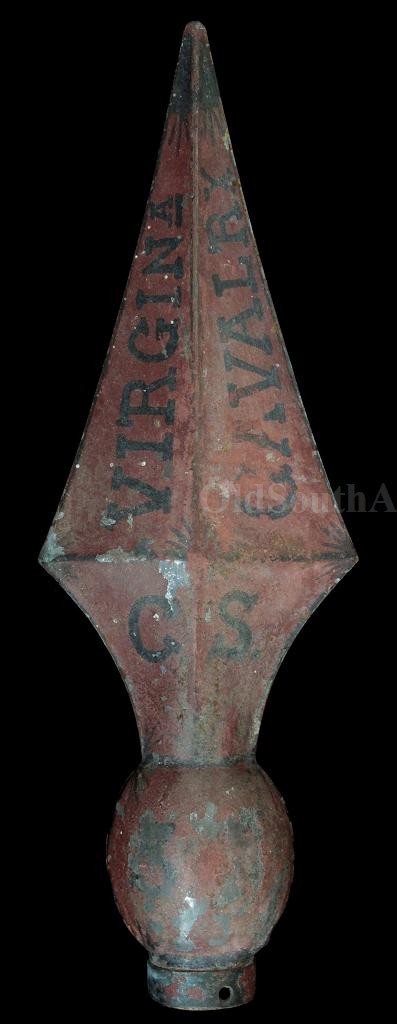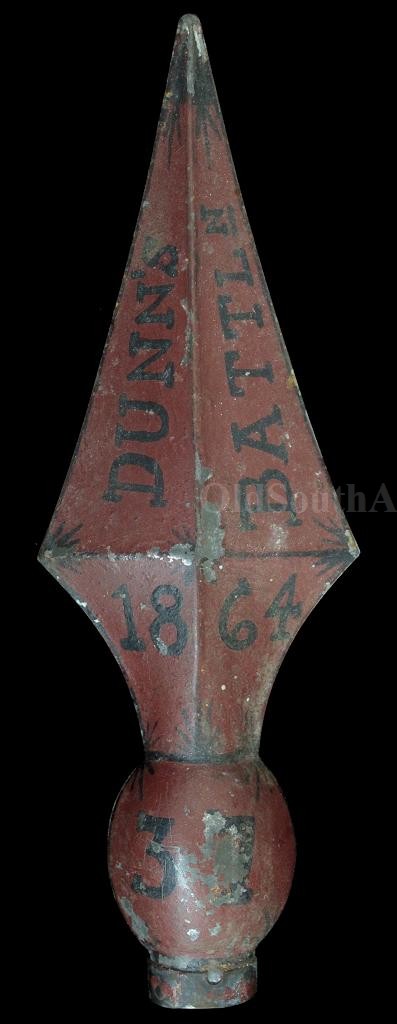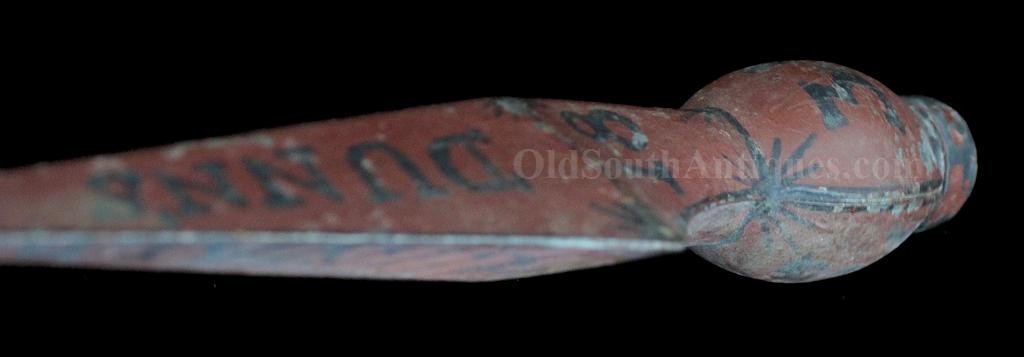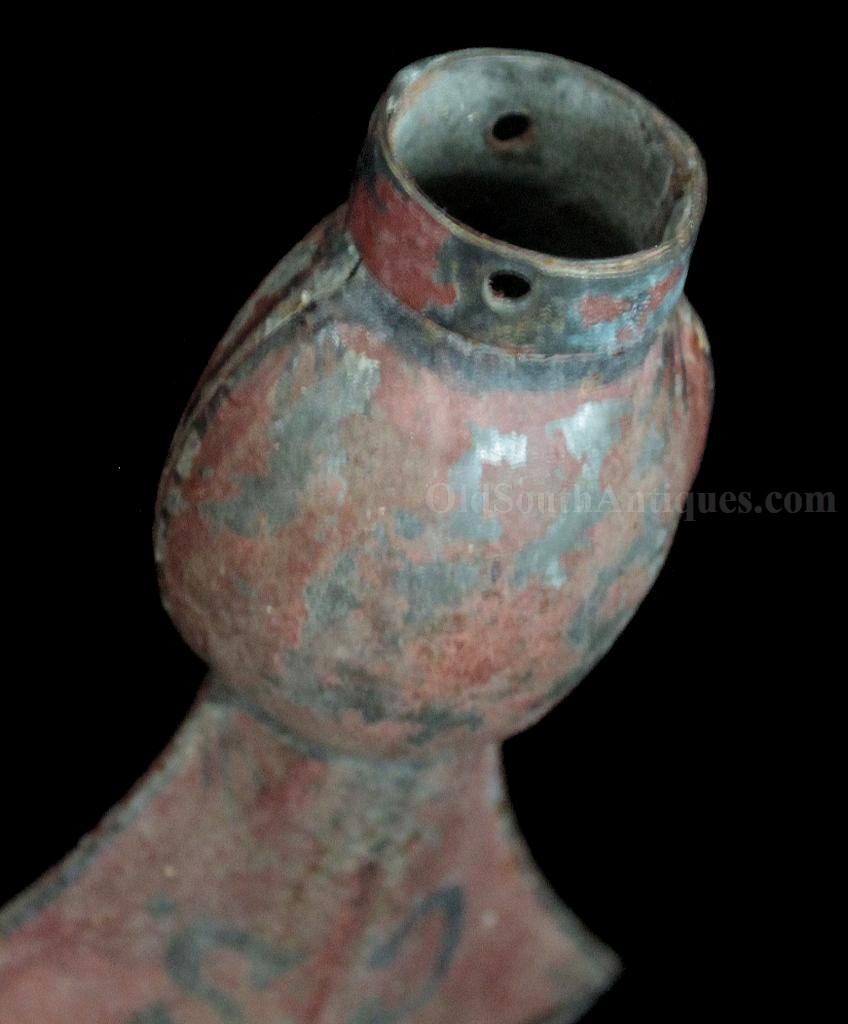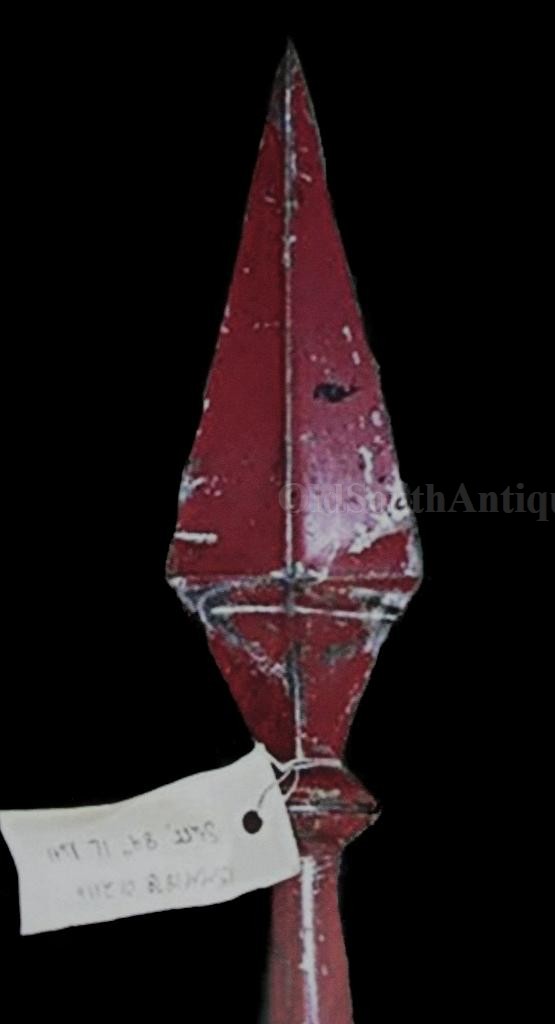
| Catalog | Past Items | Order Info | Terms/Conditions | About Us | Inventory Clearance |
The flagstaff finial shown here is from the staff of Dunn’s Battalion, 37th Virginia Cavalry flag.[i] After having served in Georgia during 1861,[ii] native Marylander[iii]and West Point Graduate[iv] Ambrose Constantine Dunn raised and commanded a Battalion of Partisan Rangers. Dunn’s Battalon Partisan Rangers was raised in April of 1862[v]. Dunn joined with Humphrey Marshall’s command and on May 17th, 1862, attacked and routed a Union detachment at Princeton, (WV)Virginia. The following November, Dunn’s Battalion became a part of the 37th, Virginia Cavalry, under Brigadier General A.G. Jenkins.
When the spring 1863 campaign got underway, the 37th was very active, skirmishing or fighting at Beverly, Jane Lew and Summersville, Virginia.
On July 1st, the 37th, in conjunction with Colonel William L. Jackson’s command moved out of camp determined to take in the 1000 Union troops stationed in Beverly. Lt. Colonel Dunn’s command was sent around the town to attack from the opposite side. But Dunn was a little to independent, and did not attack, stating that the Union forces had been reinforced to 2500 men. Jackson was not impressed and arrested Dunn on charges of disobeying orders.
In August, though still under arrest, Dunn led his men to aid Colonel George S. Patton at the Battle of White Sulphur Springs, where 1900 Confederates were pitted against 3500 Federals.[vi] The arrival of Patton and Dunn’s commands saved the day. Patton stated that Colonel Dunn had conducted himself in a soldier-like and gallant manner and had been an encouragement to his men, in forcing the retreat of the Federals.
When the 37th moved to Abington, Virginia on October 15th, Dunn was ordered to remain and face the charges by Colonel Jackson. The court cashiered Dunn on November 6th, 1863.
What occurred between then and June 24th, 1864 is unknown, but on that date, Confederate President Davis personally reinstated Dunn, placing him in command of the 37th Virginia Cavalry, which went on to fight at Monocacy, was at the Burning of Chambersburg, fought Third Winchester, Fisher’s Hill and Cedar Creek. Dunn commanded until the end of the War and surrendered at Lynchburg, Virginia on August 2nd, 1865.
Moving to the flagstaff finial proper; the spear point finial is made entirely of tin; it measures nine inches in length and is three inches broad. In his seminal study of Flagstaff Finials, Toppers, & Ferrules of the American Civil War, Del Thomasson shows multiple examples of red, tin flagstaff finials nearly identical, demonstrating that they were commercially available at the time.
What makes this finial really special is the information that was applied after it was manufactured. "DUNN’S BATTLN over 1864” over the Regimental number 37 on the lower sphere was added in black paint. On the opposite side, "VIRGINIA CAVALRY over CS, over 37” was added.
Because this final has the legend "Dunn’s Battalion, and CS, and 37, and Virginia Cavalry”, I think I can reasonably deduce that when Colonel Dunn returned to take over the Regiment in the spring of 1864, he brought with him a flag, or at the least, this finial; but there probably was a flag flying below this finial when he rode into camp.
The finial is well worn, but in very good condition. One of the 37’s is mostly worn off, but the rest of the writing is excellent, and though the some of the red is worn off of the high places, the rest is in excellent condition and remains firmly adhered to the tin. The artifact is truly spectacular.
Copyright © 2024 OldSouthAntiques.com All Rights Reserved.
Privacy Policy | Terms of Use
Powered by Web-Cat Copyright © 1996-2024 GrayCat Systems
